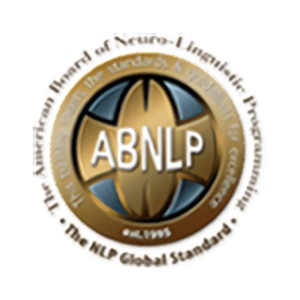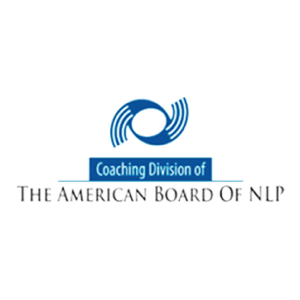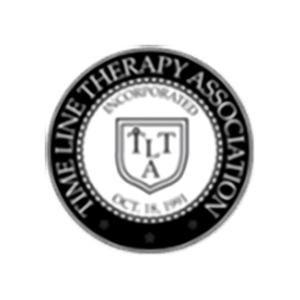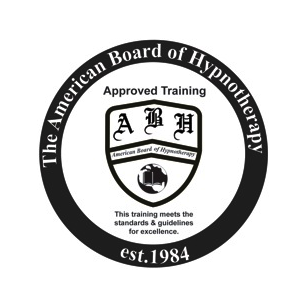Despite being two separate fields and clinical approaches to treatment, neuro-linguistic programming and hypnosis can complement one another. Professionals trained in both methods are in the best place to offer their patients the highest quality of help.
What is the Difference Between Hypnosis and NLP?
Hypnotherapy is a treatment style that relies on guided relaxation followed by hypnotic suggestions to help a patient change their habits or overcome their fears. NLP, or Neuro Linguistic Programming, is a corrective approach focusing on personal development and communication skills. Both the procedure and the end goal are quite different.
How Does Neuro-Linguistic Programming Work?
NLP practitioners link neuro-linguistic or language-based associations and programming or established behavioral patterns. This theory by Richard Bandler and John Grinder holds that all successful people have certain shared traits. With the proper tools and training, ordinary people can learn those qualities and achieve their life goals.
This treatment can help clients struggling with certain phobias, depression, and learning disorders. It’s also useful as a type of leadership training for senior officials in various businesses and government organizations.
Neuro-Linguistic Programming successfully applies across disciplines from education and sales to insurance and human resources departments.
How Does Hypnosis Work?
There are two steps to the hypnosis technique. The first involves setting the client at ease, using methods like guided breathing, visualization, or eye contact. In the initial step, the hypnotherapist attempts to induce a trance-like state in the patient, making them suggestible.
Clients feel safe and secure in their environment and are more likely to accept your suggestive commands. That brings us to the second step, which is treatment. The main types of treatment are either suggestive or analytic.
You can help clients work through their phobias by playing out a scenario. Alternatively, you can make suggestions that register with their subconscious. Ultimately, a trigger like clapping your hands, snapping your finger, or jingling a bell will end the trance, allowing the patient to return to the safety and comfort of your office.
How can NLP Be Used to Aid Hypnosis?
While NLP is not the same as hypnosis, it can help you become a better hypnotherapist. Ultimately if you want to succeed in providing high-quality hypnotherapy, you have to start by improving your outlook on life. NLP helps unleash your power and prepares you with the tools to transfer this understanding to your clients.
Therapists must also be extremely in tune with their clients. You have to pick up non-verbal cues and collect data from the bits and pieces of information they disclose to you. One of the major focuses of NLP training is sensory acuity, in other words, developing your powers of observation. These techniques are extremely helpful during hypnosis.
What NLP Techniques Will a Hypnotherapist Use?
There is a considerable amount of overall between the techniques you’ll learn during Neuro Linguistic Programming training and your practice as a hypnotherapist. These tools allow you to understand better how the brain works and what you can do to perfect your communication style.
Outcome or Problem
The outcome frame deals with stagnancy in people’s lives. Whether you’re unable to get what you want in your professional or personal life, the problem for most people is not knowing what they want or how to get there.
NLP deals with these issues with a very targeted approach. The training helps people identify precisely what they want. Once you can see your end goal, orienting yourself in that direction is easy. NLP does a lot more than that.
Trained NLP experts help clients discover what resources they already have in their arsenal and how they can use these tools to achieve their ultimate goals. The outcome or problem approach focuses on directing all of a client’s energy towards manifesting the change they want to see in their lives.
How or Why
NLP helps patients see their thoughts and feelings as things they can control. It focuses on making operational decisions instead of passive effects and can be extremely helpful in hypnotherapy. The NLP Master Practitioner Certification covers this under “Perception is Projection.”
Reworking their mental map is an effective growth strategy for patients dealing with phobias or anxiety. Once you understand how you got to this stage in your life or why you can’t seem to get out of it, you can start building on your deeper mental reserves.
Feedback or Failure
Therapists often refer to negative feedback loops as the primary cause for poor feelings of self-worth in patients. This critical inner voice tries to convince people that they are a failure no matter what they do. However, NLP techniques help clients reprogram their brains for success.
Like hypnotherapy, NLP replaces these negative automatic thoughts with positive feedback. NLP professionals can take tried and tested methods that the world’s most successful people have used and apply them to the minds of ordinary people. This can include methods like affirmations, visualization strategies, and even modeling.
Possibility or Necessity
There are two situations in which NLP training may benefit a patient. The first is possibility. This is when a client wants to explore their potential and self-growth. That can mean improving leadership skills or communication abilities for better success at work or in their personal lives. For these clients, NLP and hypnosis are a means to an end – reaching their goals.
The second is necessity. Clients struggling with anxiety, stress, insomnia, or chronic pain may need hypnotherapy and neuro-linguistic programming to manage their symptoms better. In this case, it is a need that drives their treatment.
Curiosity and Fascination, or Assumption
Clients may have several assumptions about how they think hypnosis will go when they come in. Undoing these preconceived notions is a key part of the role of a therapist. On the other hand, clients with genuine curiosity and fascination are already in the mind frame to reach their higher selves.
What Kind of Issues Can Be Treated With NLP and Hypnotherapy
NLP and hypnotherapy are useful treatment approaches for patients dealing with phobias, anxiety, PTSD, and cases of addiction. They’re effective techniques for habit-building or developing skills like public speaking, clear communication, team building, and leadership. Overall, NLP and hypnosis deal with reprogramming the brain for success.
Personal Development
One of the biggest pros of NLP and hypnotherapy is in the area of personal development. The primary focus of NLP is developing good communication skills with yourself and others and taking actionable steps toward achieving your goals.
This type of training is the best route to personal growth for people who want to develop better leadership skills, public speaking abilities, and team-building skills. The skills you learn from NLP sessions translate into your professional and personal lives, making you more focused and action-oriented.
Stress and Anxiety
NLP and hypnotherapy are common treatment plans for mental health issues like stress and generalized anxiety. Patients struggling with these illnesses often feel their impact in every aspect of their lives. Whether it’s a promotion at work or hanging out with friends, clinical anxiety can cause problems in interpersonal relationships.
With NLP and hypnotherapy approaches, experts help patients develop coping mechanisms for these issues. Imagery training is a basic strategy for neuro-linguistic programming and uses a visualization approach. When clients can rehearse potentially stressful scenarios mentally, it helps them embody that fictional version of themselves – confident, secure, comfortable, and determined.
Changing Bad Habits
Bad habits cover everything from nail biting and smoking to overeating and insomnia. When the brain is in a suggestible state, i.e., during hypnosis, it is easier for therapists to use hypnotic commands to reform these habits. Similarly, NLP training helps professionals identify the root cause of the habit and equip patients with the tools to break these learned behaviors.
The ultimate goal of hypnosis and neuro-linguistic programming is to eliminate thought and behavior patterns that no longer benefit the client. Patients can take back control of their lives by retraining the brain to perceive situations differently and offer measured reactions.
Pain Control
NLP practice holds that each person’s view of reality is biased and based on their perception. That’s why different people have varying pain tolerances. NLP hypnosis techniques use guided imagery and visualization to shift this internal experience. This mental map uses auditory, visual, olfactory, gustatory, and kinesthetic responses to the environment.
Patients can achieve greater pain control by altering their understanding of this sensory experience. For example, a therapist may ask a patient to visualize their pain, giving it a size, shape, color, or even sound or temperature. Then they will walk the patient through a mental exercise that transforms this image.
Picture the wound healing, the pain turning from red to blue, hot to cold, or compressing and becoming smaller until it fits in your hand’s palm. These NLP hypnosis methods are an ideal pain control strategy.
Weight Loss
Weight loss strategies rely mostly on a client’s willpower and focus. Healthy weight loss requires commitment and positive habit-building, from portion control to gym frequency. NLP and hypnosis techniques combined with the guidance of a nutritionist are great approaches to help clients get into the right mindset.
When clients visualize their goal weight and ideal body type, they will be more motivated to work towards it. Examining a person’s mental map can help an NLP specialist strengthen useful skills and replace unproductive thoughts with action-focused approaches.
Sleep Issues
For patients struggling with insomnia or trouble sleeping peacefully, NLP hypnosis techniques can help them filter through their thoughts at the end of the day. The training exercises included in these sessions are designed to help people calm their nerves and reach a relaxed state.
Learning More About Hypnosis and Neuro-Linguistic Programming
If you’ve found this guide on hypnosis and neuro-linguistic programming fascinating, continue exploring the latest developments in the field. NLP Top Coach offers several highly ranked courses like the NLP Practioner Certification, the NLP Master Practitioner Certification, and the NLP Master Trainer Certification to help you develop your skills in the field.








